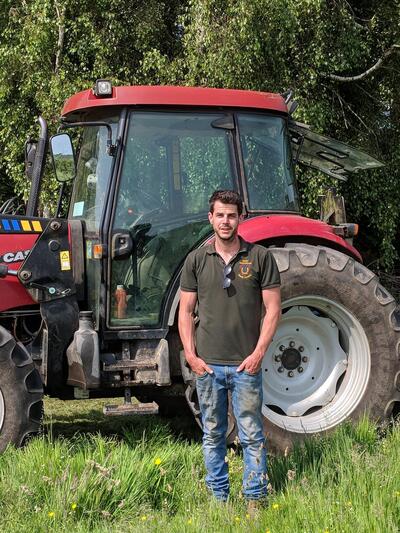For many students, the prospect of living and working on the grounds of the Herstmonceux Castle estate, nestled in the English countryside, is what truly sets the BISC apart as an experience studying abroad.
 The task of managing the Castle’s beautiful but vast estate lies with new Grounds and Gardens Manager Guy Lucas and his team of gardeners and grounds staff. All told, the Castle’s estate comprises more than 600 acres of land, which includes marshland, farmland, formal gardens, amenity grassland, wild flower meadows, and both commercial and amenity woodland. It is a demanding job, as each area requires a specific and structured management program to maintain its aesthetic value and ensure the health, resilience, and biodiversity of the flora and fauna in each area.
The task of managing the Castle’s beautiful but vast estate lies with new Grounds and Gardens Manager Guy Lucas and his team of gardeners and grounds staff. All told, the Castle’s estate comprises more than 600 acres of land, which includes marshland, farmland, formal gardens, amenity grassland, wild flower meadows, and both commercial and amenity woodland. It is a demanding job, as each area requires a specific and structured management program to maintain its aesthetic value and ensure the health, resilience, and biodiversity of the flora and fauna in each area.
The fine borders and manicured lawns nearest the Castle quite rightly receive plenty of attention, as they are mainly for the students’ and public’s benefit, but behind the scenes, Guy’s team works alongside conservation bodies such as Natural England and The UK Forestry Commission to improve all corners of the estate ecologically. With more than 130 acres of woodland — including some semi-ancient woodlands (recorded in maps made in the 1600s, though some trees are likely to be even older) — there is always work to be done.
Guy and his team are currently working on The Park: the last remnant of an historic deer park which once surrounded Herstmonceux Castle. In its prime, the Castle estate held upwards of 200 fallow deer and was used as a formal hunting ground by the Lord of the Manor. Today, The Park has become a dense woodland of birch and sycamore trees. However, through grant funding from Natural England, Herstmonceux Castle has a 10-year plan to restore this area back to its former parkland style. By carefully removing some of the non-native and more prolific tree species, Guy hopes to return this area to a floristically rich, diverse, and historic parkland once again. The estate already has approximately 20 roe deer moving through the woodlands from dawn until dusk and upwards of 30 fallow deer that roam the estate in large herds, taking shelter in the woodlands at night.
The Castle has also declared war on rhododendron bushes. If you wander practically anywhere in the woods, you will see many large, dark-green rhododendron bushes that were introduced to the estate in Victorian times. While it may produce pretty flowers, as a non-native and invasive species it is capable of dominating and suppressing native flora and fauna, leaving a lasting negative effect on areas that can take years to recover. The leaves, bark, roots and flowers poison the woodland ground, turning the soil so acidic nothing can grow in it but the rhododendron.
Guy says, “So, that’s basically the plan. Over the next few years you will hopefully see fewer rhododendron, and after some other strategic felling projects, and the help of Mother Nature, you will start to witness new vistas opening up, greater diversity, and an overall much healthier Castle estate. After the most recent woodland thinning, we are already seeing some fantastic signs of regeneration with elder hazel, honeysuckle, bluebell, wood anemone and foxglove making a strong appearance in the understory this spring.”